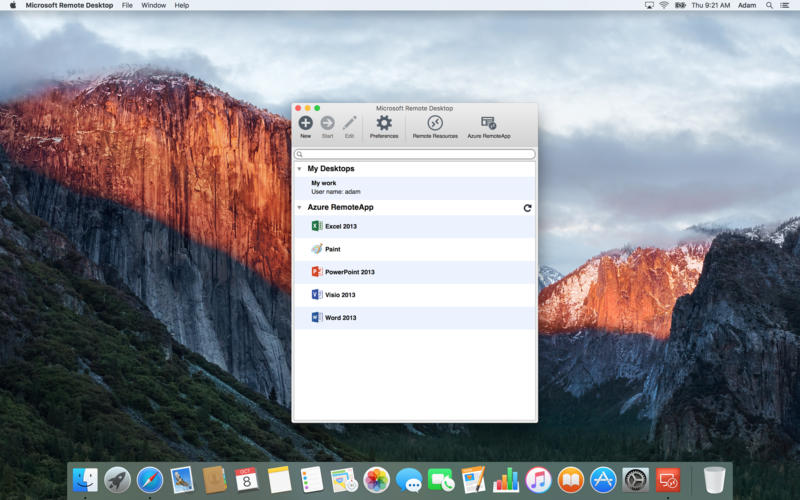

Navigate to the Extensions tab, edit the ‘Application Policies’ extension and remove ‘Client Authentication’ from the list.Īfter you added the ‘Remote Desktop Authentication’ policy, you should see the policies and see in the following dialog box.

Use this template because it already has the Server Authentication policy enabled. To create the new template, open the Certificate Templates console and duplicate the Computer template. In my lab, I’ve created a ‘Remote Desktop Computer’ certificate template and enabled it to be autoenrolled via Group Policy. This article has a great walk-through of the entire process and more: RDP TLS Certificate Deployment Using GPO. Some articles will walk through this configuration and recommend removing the Server Authentication policy however, the certificates will then not work on non-Windows clients. This was key for OS X clients - both of these policies must exist.
MICROSOFT REMOTE DESKTOP MAC OS SIERRA WINDOWS
To configure a certificate for use with Remote Desktop Services (or RDP into any Windows PC), you’ll need to create a new certificate template and enable both the Server Authentication and the Remote Desktop Authentication application policies.
MICROSOFT REMOTE DESKTOP MAC OS SIERRA PC
When connecting to a Windows PC, unless certificates have been configured, the remote PC presents a self-signed certificate, which results in a warning prompt from the Remote Desktop client. VNC, OSX Screen Share, everything else is fine but RDP within Microsoft Remote Desktop.Windows has supported TLS for server authentication with RDP going back to Windows Server 2003 SP1. They shift key works fine within the admin screens of Microsoft Remote Desktop, just not inside of the RDP session. As a result, if I use Microsoft Remote Desktop, I need to use an actual keyboard if I expect to use the Shift Keys. This happens with the old version of Synergy and older versions of Microsoft Remote Desktop.

The Shift keys just do not work within Microsoft Remote Desktop RDP session when you try to use them through Synergy. If I use the keyboard from that machine it is fine. If I go to the second Mac which I am using Synergy to control the keyboard and Mouse, and I try to run Microsoft Remote Desktop to access a Windows box over an RDP session, the shift keys do not work. I have two Mac's that I share a keyboard / mouse between. This is an issue on version 1 also, but I figured I'd post it here.


 0 kommentar(er)
0 kommentar(er)
